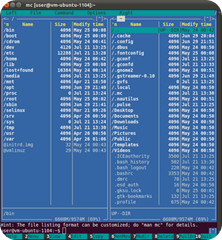 GNU Midnight Commander (also known as mc) is a free cross-platform orthodox file manager and a clone of Norton Commander. It was started by Miguel de Icaza in 1994.
GNU Midnight Commander (also known as mc) is a free cross-platform orthodox file manager and a clone of Norton Commander. It was started by Miguel de Icaza in 1994.Midnight Commander is licensed under the terms of the GNU General Public License.
Midnight Commander is a console application with a text user interface. The main interface consists of two panels which display the file system. File selection is done using arrow keys, the insert key is used to select files and the Function Keys perform operations such as renaming, editing and copying files.
Later versions of the Midnight Commander additionally have mouse support. Such versions are aware of GPM and X terminal emulators (such as GNOME Terminal or xterm) which support mouse reporting. When running inside an X terminal, these versions can update the name of the window in which Midnight Commander runs (if allowed by the terminal emulator).
Midnight Commander's features include the ability to view the contents of RPM package files, to work with common archive formats as if they were simply another directory, and to function as an FTP or FISH client. Midnight Commander also includes an editor called mcedit, which can be executed as standalone program or from Midnight Commander using the F4 key. mcedit's features include syntax highlighting for many languages, macros, code snippets, simple integration with external tools, automatic indentation, mouse support, clipboard and the ability to work in both ASCII and hex modes. Users also have the option to replace mcedit with the editor of their choice (Options Menu>Configuration>[Don't] Use Internal Edit).
Midnight Commander can also rename groups of files, unlike a number of other file managers that can only rename one file at a time. This is convenient for manipulating large collections of files, e.g. to make them conform to a new naming convention. Midnight Commander can also move files to a different directory at the same time as it renames them. It lets the user specify the original and resulting file names using wildcard characters.
This makes the power of regular expressions available for renaming files, with a convenient user interface. In addition, the user can select whether or not to utilize "shell patterns" or "globs" (automatic grouping of wildcards). All of these features are available by using the File > Rename/Move menu selection. (Pressing F1 would then produce a brief explanation of the options, including examples of how to use wildcards.)
Midnight Commander is based on versatile text interfaces, such as Ncurses or S-Lang, which allow it to work on a regular console, inside an X Window terminal, over SSH connections, RS-232 interface (for embedded devices) and all kinds of remote shells.
Native support for UTF-8 locales for Unicode was added in 2009 to development versions of Midnight Commander. As of version 4.7.0, mc has had Unicode support.
Midnight Commander supports several virtual file systems (VFS) such as, tarfs to view the content of the several archive files (tar, tgz, bz2, rpm etc.) , ftpfs to browse FTP repositories of a remote server, fish to manipulate files on a remote server over ssh, undelfs to recover a deleted file.
1. Installation
mc comes with most of the Linux distributions. Verify whether your system already has mc:# rpm -qa mc
mc-4.6.2-3.pre1.fc9.i386
If you don’t have mc, install it using yum:
# yum install mc
Execute mc -V to see all compiled options on your midnight commander:
# mc -V
GNU Midnight Commander 4.6.1-pre1a
Virtual File System: tarfs, extfs, cpiofs, ftpfs, fish, undelfs
With builtin Editor
Using system-installed S-Lang library with terminfo database
With subshell support as default
With support for background operations
With mouse support on xterm and Linux console
With support for X11 events
With internationalization support
With multiple codepages support
Note: You can also install mc from source code. Download mc source code from GNU FTP site.
2. Midnight Commander layout
Launch midnight commander user interface using one of the following methods:# mc
# mc -a
[Note: If display lines are not drawn properly, use -a]
# mc -c
[Note: Option -c will display mc in color]
Midnight commander user interface has four sections as explained below.
Screenshots.
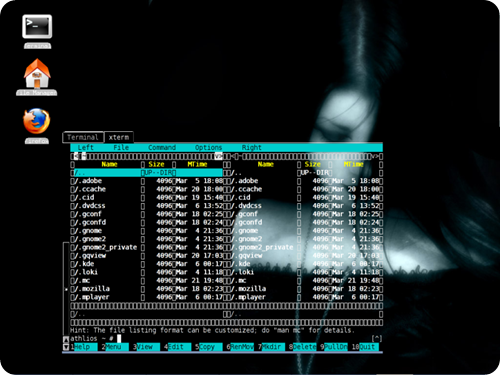

![GNU midnight Commander-[1] GNU midnight Commander-[1]](http://lh6.ggpht.com/-WI8KIAz5q1s/UBmJuVJ7-6I/AAAAAAAAIr0/3O82iOEWChg/GNU%252520midnight%252520Commander-%25255B1%25255D_thumb%25255B3%25255D.jpg?imgmax=800)
![GNU midnight Commander-[3] GNU midnight Commander-[3]](http://lh4.ggpht.com/-kqXV8dBRTaE/UBmJxaftigI/AAAAAAAAIsE/vo8q04nSRTk/GNU%252520midnight%252520Commander-%25255B3%25255D_thumb%25255B2%25255D.png?imgmax=800)
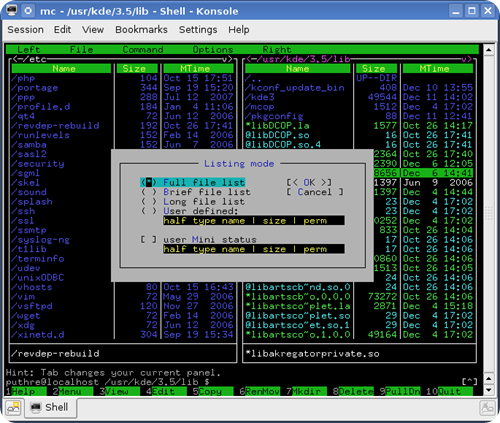
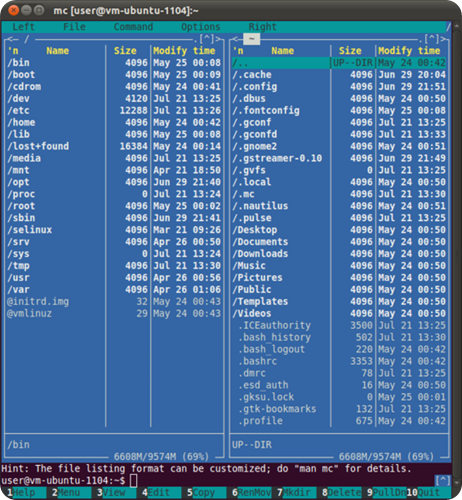

Custom Search
If you liked this article, subscribe to the feed by clicking the image below to keep informed about new contents of the blog:
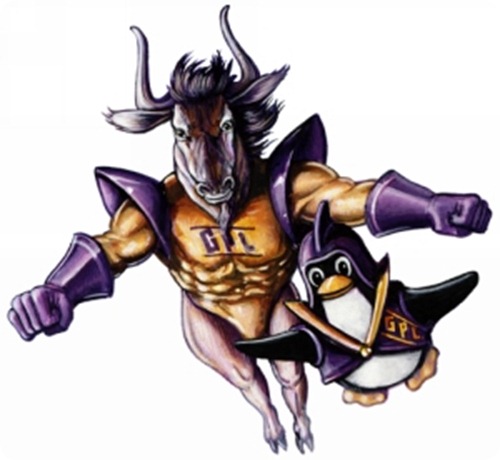






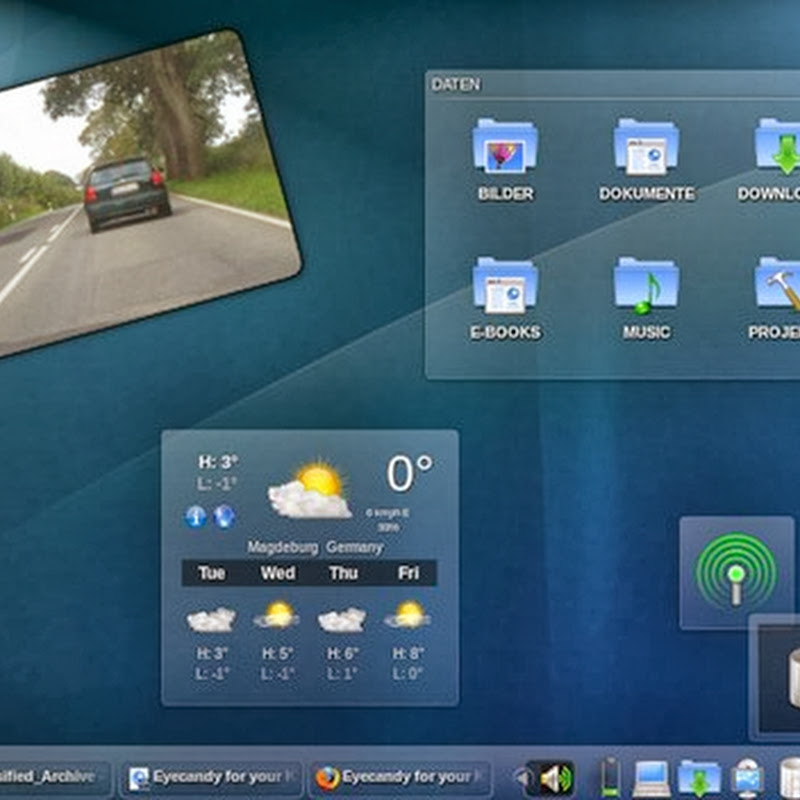

0 commenti:
Post a Comment